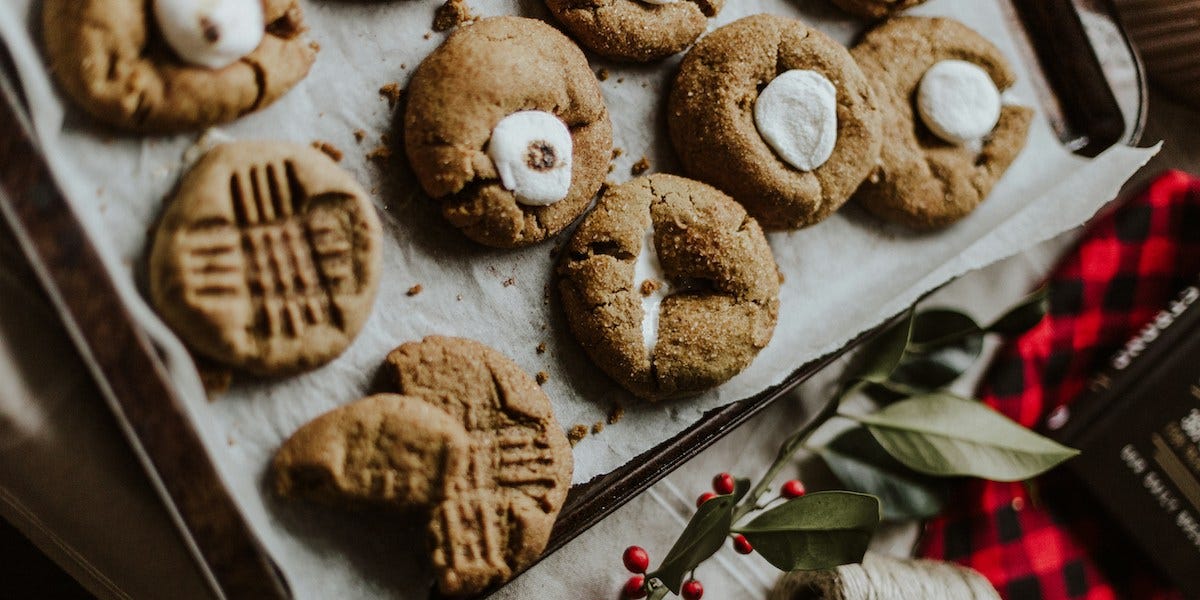Welcome to the delightful world of baking, where flour, sugar, and butter come together to create mouthwatering treats that tantalize the senses. Whether you’re a novice baker or a seasoned pastry chef, understanding the baking fundamentals of baking is essential for mastering the art of creating delectable goodies. In this comprehensive guide, we’ll explore everything from basic ingredients to advanced techniques, helping you navigate the wonderful world of baking with confidence and skill.
Introduction to Baking
Baking is both a science and an art. It requires precision, patience, and a passion for perfection. By mastering the baking fundamentals, you can unlock endless possibilities in the kitchen and delight friends and family with your culinary creations.
Understanding Ingredients
Flour: The Backbone of Baking
Flour serves as the foundation for most baked goods, providing structure and texture to your creations. From all-purpose flour to specialty varieties like cake flour and bread flour, choosing the right type of flour is crucial for achieving the desired results.
Sugar: Sweetening the Deal
Sugar not only adds sweetness but also contributes to the texture, color, and moisture content of baked goods. From granulated sugar to brown sugar and powdered sugar, each type of sweetener brings its own unique characteristics to the mix.
Eggs: Binding and Leavening Agent
Eggs play multiple roles in baking, acting as both a binder and a leavening agent. They provide structure, stability, and moisture to baked goods, while also helping them rise and achieve a light, fluffy texture.
Yeast: The Magic Behind Rising Dough
Yeast is a living organism that plays a crucial role in leavening bread and other yeast-risen baked goods. By consuming sugars and producing carbon dioxide gas, yeast causes dough to rise, resulting in light, airy textures and deliciously fluffy bread.
The Science of Baking
Baking is as much about chemistry as it is about creativity. Understanding the science behind the baking fundamentals can help you troubleshoot issues, make adjustments on the fly, and achieve consistent results with every batch.
Understanding Gluten Formation
Gluten is a protein found in wheat flour that gives baked goods their structure and elasticity. By kneading dough or mixing batter, you develop gluten strands that trap air bubbles and create a network of support, resulting in tender, chewy textures.
Importance of Temperature Control
Temperature control is critical in baking, as slight variations can significantly impact the outcome of your recipes. From preheating your oven to chilling dough before baking, maintaining the right temperature throughout the baking process ensures even cooking and optimal results.
Basic Baking Techniques

Mastering basic baking techniques is essential for creating a wide range of delicious treats, from simple cookies and muffins to elaborate cakes and pastries.
Proofing and Fermentation
Proofing is the final rise that dough undergoes before baking. During this stage, yeast produces carbon dioxide gas, causing the dough to expand and develop flavor. Proper proofing is essential for achieving light, airy textures and robust flavors in bread and other yeast-risen baked goods.
Baking Tools and Equipment
Having the right tools and equipment can make all the difference in your baking fundamentals, allowing you to work more efficiently and achieve professional-quality results.
Essential Tools for Every Baker’s Kitchen
From measuring cups and spoons to mixing bowls and baking pans, there are certain tools that every baker should have in their kitchen. Investing in high-quality equipment can streamline the baking fundamentals and help you achieve consistent results with every batch.
Popular Baked Goods
Baking encompasses a wide range of delicious treats, from crispy cookies and tender cakes to flaky pastries and crusty breads. Exploring the world of baked goods allows you to discover new flavors, techniques, and cultural traditions.
Bread: From Baguettes to Brioche
Bread is a staple food enjoyed in cultures around the world, with countless variations to suit every taste and preference. From crusty baguettes and fluffy dinner rolls to buttery brioche and savory focaccia, the possibilities are endless when it comes to baking bread.
Cakes: Fluffy Layers of Sweetness
Cakes are synonymous with celebration and indulgence, with endless variations to suit every occasion. Whether you prefer light and airy sponge cakes, rich and decadent chocolate cakes, or fruity and refreshing chiffon cakes, there’s a cake for every palate and preference.
Pastries: Flaky Delights from Around the World
Pastries are a beloved treat enjoyed in cafes, bakeries, and homes around the world. From delicate croissants and buttery danishes to indulgent éclairs and creamy custard tarts, pastries come in a wide range of shapes, flavors, and textures, each more delicious than the last.
Troubleshooting Common Issues
Even the most experienced bakers encounter challenges from time to time. Knowing how to troubleshoot common baking issues can help you overcome obstacles and achieve perfect results every time.
Dense Cakes and Breads
Dense cakes and breads can be caused by a variety of factors, including overmixing the batter or dough, using expired leavening agents, or underbaking the final product. To prevent dense textures, be sure to follow recipes carefully, avoid overmixing, and test for doneness with a toothpick or cake tester.
Exploring Flavor Profiles
Experimenting with different flavor combinations is one of the joys of baking, allowing you to create unique and memorable treats that delight the senses.
Classic Combinations and Innovative Twists

From classic pairings like chocolate and peanut butter to innovative flavor combinations like matcha and white chocolate, there are endless possibilities when it comes to flavoring baked goods. Don’t be afraid to get creative and experiment with unexpected ingredients to create one-of-a-kind treats that showcase your unique style and taste.
Incorporating Herbs, Spices, and Extracts
Herbs, spices, and extracts are versatile ingredients that can add depth, complexity, and aroma to your baked goods. Whether you’re infusing cakes with fragrant vanilla bean or adding a hint of cinnamon to your favorite cookie recipe, incorporating herbs, spices, and extracts allows you to elevate the flavor profile of your creations and tantalize the taste buds.
Baking for Special Diets
With an increasing emphasis on health and wellness, many people are seeking alternatives to traditional baked goods that accommodate special dietary needs and preferences.
Gluten-Free Alternatives
For individuals with gluten sensitivities or celiac disease, gluten-free baking fundamentals offers a delicious and satisfying alternative to traditional wheat-based treats. From almond flour and coconut flour to gluten-free baking mixes and specialty ingredients, there are countless options available for creating gluten-free baked goods that are just as tasty as their traditional counterparts.
Mastering Decorations and Presentations
In addition to taste, presentation plays a key role in the enjoyment of baked goods. Mastering decoration techniques allows you to transform simple treats into stunning works of art that are as beautiful as they are delicious.
Frosting and Icing Techniques
Frosting and icing are versatile mediums that allow you to add color, texture, and flavor to your baked creations. Whether you prefer smooth and glossy glazes or intricate piped designs, mastering frosting and icing techniques allows you to personalize your treats and make them truly special.
Garnishes and Finishing Touches
Garnishes and finishing touches add the perfect finishing touch to your baked goods, enhancing their visual appeal and providing a burst of flavor and texture. From fresh fruit and edible flowers to shaved chocolate and toasted nuts, there are countless options for embellishing your treats and making them look as good as they taste.
Tips for Successful Baking
Achieving perfect results in the kitchen requires more than just following a recipe. By incorporating these tips and techniques into your baking routine, you can elevate your skills and create bakery-quality treats that impress friends and family alike.
Preparing Ingredients in Advance
Before you begin baking, take the time to gather and prepare all of your ingredients. This includes measuring out dry ingredients, bringing eggs and butter to room temperature, and prepping any fruits or nuts that will be added to the recipe. By having everything ready to go before you start mixing, you can streamline the baking process and avoid last-minute scrambling.
Following Recipes vs. Experimenting
While it’s important to follow recipes carefully, don’t be afraid to experiment and put your own spin on traditional favorites. Whether you’re adding a splash of bourbon to your chocolate cake or swapping out nuts for dried fruit in your cookie recipe, experimenting with different flavors and ingredients allows you to unleash your creativity and create truly unique and memorable treats.
The Joy of Baking
At its core, baking fundamentals is about more than just following recipes and mastering techniques. It’s about creativity, self-expression, and the simple joy of creating something delicious from scratch.
Conclusion
Navigating the world of baking fundamentals may seem daunting at first, but with the right knowledge, tools, and techniques, anyone can become a confident and skilled baker. By understanding the science behind baking, mastering basic techniques, and experimenting with flavors and ingredients, you can unlock endless possibilities in the kitchen and create delicious treats that delight the senses and warm the heart.
